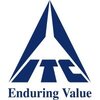Filter interviews by
Aakriti Manufacturing Product Engineer Interview Questions and Answers
Aakriti Manufacturing Product Engineer Interview Experiences
1 interview found
I applied via Company Website and was interviewed in Mar 2021. There was 1 interview round.
Interview Questionnaire
1 Question
- Q1. Production increase with run manpower
- Ans.
Increasing production requires more manpower.
Adding more workers can increase output.
Efficient use of manpower is important.
Automation can also increase production without adding manpower.
Training and development of workers can improve productivity.
Balancing manpower and production targets is crucial.
Interview Preparation Tips
Top trending discussions






Interview questions from similar companies

I applied via Recruitment Consulltant and was interviewed in Nov 2024. There were 3 interview rounds.
(2 Questions)
- Q1. My work experience, included machine type.
- Q2. How many year of experience.
- Ans.
I have 5 years of experience in production engineering.
I have worked in the production engineering field for 5 years.
My experience includes optimizing production processes and improving efficiency.
I have successfully implemented cost-saving measures in previous roles.
I have a strong understanding of manufacturing principles and technologies.
I have experience working with cross-functional teams to achieve production goa
(2 Questions)
- Q1. Question regarding machine shop.
- Q2. CNC & VMC programming.
(2 Questions)
- Q1. How to handle the manpower .
- Ans.
Manpower can be effectively handled by proper planning, communication, training, and motivation.
Develop a clear organizational structure and job roles
Communicate effectively with the team to ensure understanding of goals and expectations
Provide necessary training and resources for skill development
Motivate and reward employees for their hard work and achievements
Regularly evaluate performance and provide feedback for i
- Q2. Expectation of salary amount.
- Ans.
Salary expectations are based on industry standards, experience, and location.
Research industry standards for Production Engineers in your area
Consider your level of experience and skills
Factor in the cost of living in the location of the job
Be prepared to negotiate based on benefits and perks offered
Provide a range rather than a specific number

(1 Question)
- Q1. Tell about job roles
Interview Preparation Tips
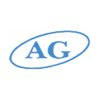
I applied via Recruitment Consulltant and was interviewed in Jun 2023. There were 4 interview rounds.

(1 Question)
- Q1. Questions was technical as injection Moulding
(1 Question)
- Q1. Jobs related Questions
(1 Question)
- Q1. Only salary discotions

Production Engineer Interview Questions & Answers
Amphenol Interconnectposted on 11 Mar 2024
(1 Question)
- Q1. About injection molding

I applied via Naukri.com and was interviewed in Aug 2022. There were 2 interview rounds.

(14 Questions)
- Q1. What Is oee calculation
- Ans.
OEE calculation is a measure of manufacturing productivity that combines availability, performance, and quality metrics.
OEE stands for Overall Equipment Effectiveness
It is calculated by multiplying availability, performance, and quality percentages
OEE helps identify areas for improvement in manufacturing processes
Example: If a machine has 90% availability, 95% performance, and 98% quality, its OEE would be 83.79%
OEE is...
- Q2. What is poka yoka and capa
- Ans.
Poka yoke is a technique used in manufacturing to prevent errors, while CAPA stands for Corrective and Preventive Action.
Poka yoke is a Japanese term meaning 'mistake-proofing' or 'error-proofing'. It involves designing a process or system in a way that prevents mistakes or errors from occurring.
Poka yoke techniques can include using sensors, alarms, or physical devices to detect and prevent errors.
For example, a poka ...
- Q3. What is difference production and productivity
- Ans.
Production is the process of creating goods or services, while productivity is the measure of efficiency in producing those goods or services.
Production refers to the creation of goods or services, while productivity measures the efficiency of that production.
Production is a process, while productivity is a measure.
Production can be increased by adding more resources, while productivity can be increased by improving pr...
- Q4. What is tpm and jh and jh 7 steps
- Ans.
TPM stands for Total Productive Maintenance and JH stands for Job Hazard Analysis. JH 7 steps are the steps involved in conducting a JH analysis.
TPM is a maintenance strategy aimed at maximizing the productivity of equipment and minimizing downtime.
JH is a safety analysis technique used to identify potential hazards in a job or task.
JH 7 steps involve breaking down a job into steps, identifying potential hazards, deter...
- Q5. What is check sheet and wsqc,swc,wes
- Ans.
Check sheet is a tool used to collect and analyze data. WSQC, SWC, and WES are not commonly used acronyms in relation to production engineering.
Check sheet is a simple data collection tool used to track defects or issues in a process
WSQC, SWC, and WES are not commonly used acronyms in production engineering
However, there are similar tools like the 5S methodology or the DMAIC process for continuous improvement
- Q6. What is 7Qc tools check sheet and parato digram
- Ans.
7QC tools check sheet is a document used to collect and analyze data, while Pareto diagram is a graphical representation of the data.
7QC tools check sheet is used to identify and solve problems in production processes
It helps in collecting and analyzing data related to the process
Pareto diagram is a bar graph that shows the relative frequency or size of problems in descending order of importance
It helps in identifying ...
- Q7. What is rejection handling and red bin analysis
- Ans.
Rejection handling is the process of identifying and addressing rejected products. Red bin analysis is a method of analyzing rejected products to determine the cause of rejection.
Rejection handling involves identifying and segregating rejected products
Red bin analysis involves analyzing rejected products to determine the root cause of rejection
The data collected during red bin analysis can be used to improve production...
- Q8. What do you man power handling
- Ans.
Manpower handling refers to managing and organizing the workforce in a production environment.
It involves recruiting, training, and scheduling employees
Ensuring safety and compliance with regulations
Motivating and supervising workers
Optimizing productivity and efficiency
Dealing with conflicts and resolving issues
Examples include managing a production line, overseeing a team of technicians, or coordinating shifts in a f
- Q9. What is kaizen and capa
- Ans.
Kaizen is a Japanese term for continuous improvement while CAPA stands for Corrective and Preventive Action.
Kaizen involves making small, incremental improvements to processes and systems over time.
CAPA is a process used to identify and address the root cause of a problem or nonconformity.
Kaizen and CAPA are both important tools for improving quality and efficiency in manufacturing and other industries.
Examples of kaiz...
- Q10. What is efficiency in your line
- Ans.
Efficiency in production engineering refers to the ratio of output to input.
Efficiency is a measure of how well resources are utilized in the production process.
It is calculated as the ratio of output to input.
Higher efficiency means more output is produced with the same amount of input.
Efficiency can be improved by optimizing processes, reducing waste, and increasing automation.
For example, reducing the time it takes ...
- Q11. What is 4m changing formats
- Ans.
4m changing formats refers to the process of changing the format of a production line from one product to another.
It involves reconfiguring the machinery and equipment to accommodate the new product
It may require changing the packaging, labeling, and other materials used in the production process
It is a common practice in manufacturing to increase efficiency and flexibility
Example: Changing a production line from makin
- Q12. What is kpi instruction
- Ans.
KPI instruction refers to the guidelines or rules that define how key performance indicators (KPIs) should be measured and reported.
KPI instruction provides a framework for measuring and reporting KPIs consistently and accurately.
It outlines the specific metrics that should be tracked and how they should be calculated.
KPI instruction also includes guidelines for setting targets and benchmarks for KPIs.
Examples of KPI i...
- Q13. What is iso - ts audit
- Ans.
ISO-TS audit is a quality management system audit for automotive industry.
ISO-TS audit is a quality management system audit for automotive industry
It is based on ISO 9001 standard and specific requirements for automotive industry
It focuses on ensuring product quality, safety, and customer satisfaction
It involves auditing the entire production process from design to delivery
Examples of ISO-TS audit include audits of car
- Q14. What is line and machining processing
- Ans.
Line and machining processing are methods used in manufacturing to produce products efficiently and accurately.
Line processing involves a series of steps in which a product is assembled or produced in a linear fashion.
Machining processing involves the use of machines to shape and cut materials into specific shapes and sizes.
Both methods are used to increase efficiency and accuracy in manufacturing processes.
Examples of...
Interview Preparation Tips

Executive Production Interview Questions & Answers
Romsons Group Of Industriesposted on 29 Nov 2021
I applied via Naukri.com and was interviewed in Jan 2022. There were 4 interview rounds.
Interview Questionnaire
4 Questions
- Q1. Types of blow molding machine.
- Ans.
Blow molding machines are classified into three types: extrusion blow molding, injection blow molding, and stretch blow molding.
Extrusion blow molding machines use a molten tube of plastic to form the product.
Injection blow molding machines use a preform that is then blown into the final shape.
Stretch blow molding machines stretch a preform before blowing it into the final shape.
Examples of products made with blow mold...
- Q2. Basic knowledge of injection molding machine
- Q3. Procedure of mold loading
- Ans.
Mold loading involves several steps to ensure proper placement and alignment of the mold.
Inspect mold for damage or wear
Clean mold and injection machine
Secure mold to machine
Align mold with machine nozzle
Load material into machine hopper
Start injection molding process
- Q4. Previous company working related
Interview Preparation Tips
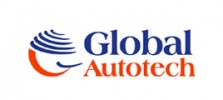
I was interviewed before Aug 2022.

(3 Questions)
- Q1. Tell about machine shop improvement related issues with you have faced in your previous company.
- Ans. What is Machining Process and how we can provide instructions for your team to improve productivity and minimise rejection and how we can improve shop floor OEE.
- Q2. How we can reduce machining cycle time?
- Ans.
Reducing machining cycle time can be achieved by optimizing tool paths, using high-speed machining techniques, implementing automation, and improving machine maintenance.
Optimize tool paths to reduce unnecessary movements and minimize idle time.
Utilize high-speed machining techniques to increase cutting speeds and feed rates.
Implement automation such as robotic loading and unloading to reduce manual handling time.
Regul...
- Q3. To reduce air cutting from machine with ECRS Methodology.
- Ans.
To reduce air cutting from machine with ECRS Methodology, adjust cutting parameters, optimize tool paths, use high-quality cutting tools, and implement proper maintenance.
Adjust cutting parameters such as speed, feed rate, and depth of cut to minimize air cutting.
Optimize tool paths to ensure efficient cutting and reduce unnecessary movements.
Use high-quality cutting tools that are sharp and well-maintained to improve ...
Interview Preparation Tips

I applied via Walk-in and was interviewed in Oct 2021. There were 4 interview rounds.
Interview Questionnaire
6 Questions
- Q1. Plz introduce your self.
- Q2. What is difference between petrol engine & diesel engine.
- Ans.
Petrol engines use spark ignition while diesel engines use compression ignition.
Petrol engines use spark plugs to ignite the fuel-air mixture, while diesel engines rely on compression to ignite the fuel.
Petrol engines typically have higher RPM (revolutions per minute) compared to diesel engines.
Diesel engines are more fuel-efficient than petrol engines.
Petrol engines are generally lighter and more compact than diesel e...
- Q3. Types of brakes
- Ans.
Types of brakes include disc brakes, drum brakes, regenerative brakes, and hydraulic brakes.
Disc brakes use calipers to squeeze brake pads against a disc rotor.
Drum brakes use brake shoes that press against the inside of a drum.
Regenerative brakes convert kinetic energy into electrical energy to recharge the battery.
Hydraulic brakes use fluid pressure to apply force to the brake pads or shoes.
- Q4. How many years or months of experience.
- Q5. Where are you stay in pithampur .
- Q6. Why are resign to previous company
Interview Preparation Tips
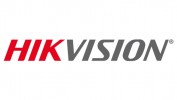
Production Engineer Interview Questions & Answers
Prama Hikvision Indiaposted on 17 Feb 2022
I applied via Company Website and was interviewed in Jan 2022. There were 2 interview rounds.

(6 Questions)
- Q1. Share details of your previous job.
- Q2. What is your family background?
- Q3. Why should we hire you?
- Q4. What are your salary expectations?
- Q5. What are your strengths and weaknesses?
- Q6. Tell me about yourself.
Interview Preparation Tips
- 7Qc
- Manpower Planning
- Production
- Kaizen Implementation
- 5s
- 7watege
- Daily Production Planning
- OEE
- Redbin Analysis
Tell us how to improve this page.
Interview Questions for Popular Designations
- Product Owner Interview Questions
- Production Engineer Interview Questions
- Production Supervisor Interview Questions
- Senior Product Engineer Interview Questions
- Product Manager Interview Questions
- Product Developer Interview Questions
- Production Manager Interview Questions
- Lead Engineer Interview Questions
- Show more
People are getting interviews through
Interview Questions from Similar Companies
|
Design Engineer
6
salaries
| ₹2 L/yr - ₹3.5 L/yr |
|
Production Engineer
6
salaries
| ₹3.5 L/yr - ₹4.5 L/yr |
|
Maintenance Engineer
4
salaries
| ₹3 L/yr - ₹5.2 L/yr |
|
Senior Executive
4
salaries
| ₹3 L/yr - ₹3.3 L/yr |
|
Junior Accountant
4
salaries
| ₹2.4 L/yr - ₹3 L/yr |
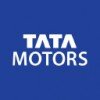
Tata Motors

Mahindra & Mahindra

Maruti Suzuki

BHEL
Calculate your in-hand salary
- Home >
- Interviews >
- Aakriti Manufacturing Interview Questions >
- Aakriti Manufacturing Product Engineer Interview Questions




